Vietnam’s first case of Covid-19 appeared on January 23, 2020. As of July 7, the country had 369 confirmed cases, but with zero deaths. Yes, the country of 97-million people has not reported a single Coronavirus-related death. On top of that, the success story also included 81 straight days of zero local transmission, despite its long border with China.
When the world thought South Korea, Taiwan, Hong Kong, Singapore or Malaysia could provide successful examples in handling the novel Coronavirus outbreak, they have clearly overlooked Vietnam. Astonishingly, when compared to those Asian countries, Vietnam is a low-middle income country with a much less-advanced healthcare system.
Armed with its previous experience fighting outbreaks like the 2003 SARS (Severe Acute Respiratory Syndrome), Vietnam sprang into action – finalizing a health risk assessment – almost immediately after China officially reported to the World Health Organization (WHO) several cases of an unusual pneumonia on December 31, 2019.
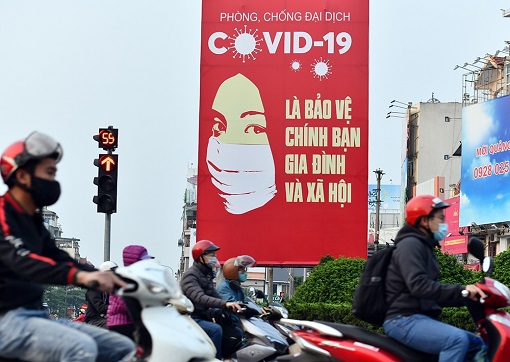
By January 21, the Vietnamese Ministry of Health had already issued guidance on outbreak prevention and detection. Before the end of January, the country had issued its National Response Plan where strict measures – airport health screenings, physical distancing, travel bans on foreign travellers, school closures and a 14-day quarantine period for international arrivals – were implemented.
In comparison, the U.S. intelligence community had to brief Donald Trump “twice” in the month of January – Jan 23 and Jan 28 – before the U.S. president was convinced and agreed to restrict travel from China on Jan 31. Even then, there was no guidance on health screenings, social distancing, school closures and certainly no quarantine for foreigners arriving on American soil.
Even before the WHO’s recommendation to wear mask, Vietnam had made it a compulsory to do so, along requiring hand sanitizers at public areas. While Europe and America have chosen to treat the Covid-19 pandemic as nothing but seasonal flu, which probably would magically go away, the Vietnamese government considered it as a combat against an invading foreign enemy.
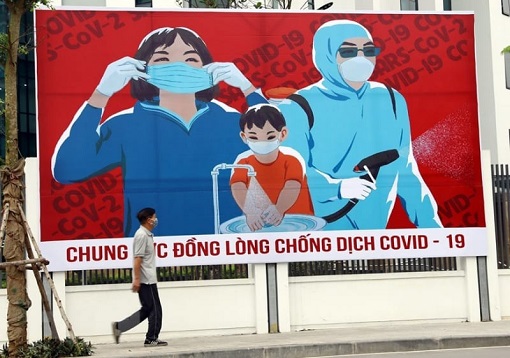
Of course, like China, it was easy to impose stringent measures and controls over people’s movements in a one-party socialist republic like Vietnam. A partial nationwide lockdown started in April 1. Three weeks later, the government lifted the lockdown and hasn’t looked back. Businesses and schools have reopened, and life has returned to normal ever since.
Thanks to the government’s swift and early response to prevent the spread of the virus, including rigorous contact-tracing, massive quarantining and effective public communication propaganda, Vietnam is now reaping the economic rewards. It’s economy unexpectedly expanded in the second quarter, ignoring the effect of the Coronavirus global downturn.
Gross domestic product (GDP) jumped by 0.36% in the April to June period, compared to the same period last year. The IMF (International Monetary Fund) in April predicted Vietnam would take the lead in Asia with a GDP growth rate of 2.7% in 2020. Vietnamese prime minister Nguyen Xuan Phuc, however, has said his government would try to keep growth above 5% – a bold statement.
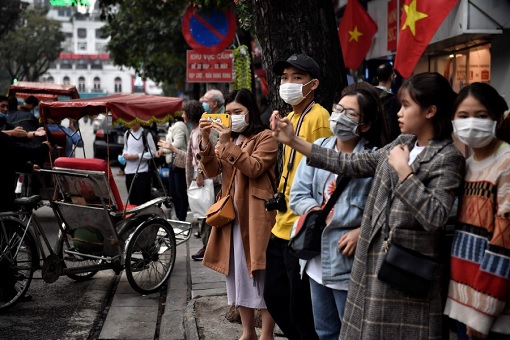
Adding credential, Fitch Ratings revealed on Sunday that Vietnam is one of only four Fitch-rated sovereigns in the Asia Pacific (APAC) that is expected to post positive economic growth in 2020, despite the impact of the Coronavirus pandemic on tourism (which contributes about 10% of its GDP) and export demand (the country’s economy is heavily reliant on exports).
Similarly, consulting firm McKinsey agreed that as a result of Vietnam’s success in curbing the pandemic, the country, recognised as one of 11 outperformers among emerging economies, is on track to fare better economically than many countries. Although its GDP growth in the first quarter has been at its lowest level since 2010, it was nevertheless still in positive territory at 3.8%.
With exports and tourism severely affected, the country would depend heavily on its key engine of growth – domestic consumption. Domestic spending contributes 68% of its GDP, thanks to a rapidly growing middle class and rising disposable income. McKinsey was confident that its domestic consumption alone can keep the economy afloat in the absence of a return to growth in other key sectors.
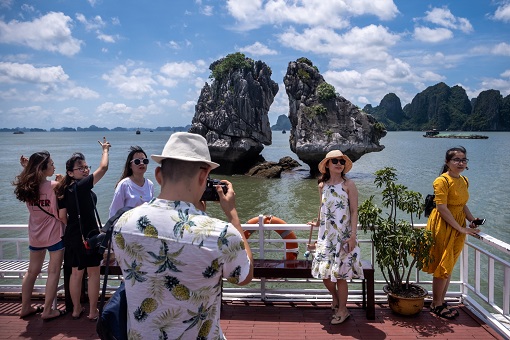
That’s because the Vietnamese’s spending on essential goods and services accounts for 42% of national GDP. But the crucial sector that will continue to drive its economy is manufacturing, a vital sector that has been running despite lockdowns in other countries. It’s a public knowledge that Vietnam was one of the few beneficiaries of the US-China trade war.
The trade war saw many China-based businesses migrated to Vietnam to avoid punitive new U.S. tariffs on China-made goods. According to Japanese investment bank Nomura, Vietnam’s economy enjoyed an 8% boost alone in 2019 due to the shift in supply chains. Now, the country is expected to receive even more investments in a “second wave” of factory relocations.
The growing anti-Chinese sentiment in the West, fuelled by Trump’s accusations that China is responsible for the outbreak, will see “friendly” Vietnam becomes a major beneficiary of diversification from China. Indeed, the Vietnamese government has been cleverly engaged in “Coronavirus Diplomacy” by lending a helping hand to the West (something which China tried too but not appreciated).
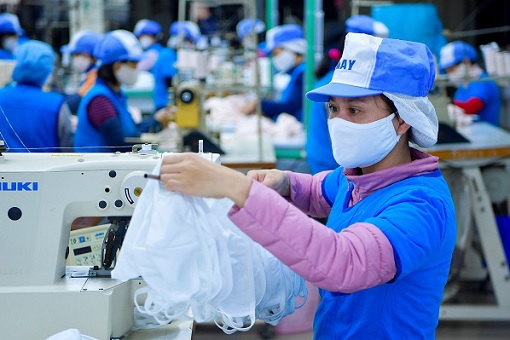
For example, the government has been assisting local businesses to ramp up production of personal protective equipment (PPE). It donated PPEs, face masks, hand sanitizers and other medical supplies to countries desperately in need of such commodities, including the United States, Russia, Spain, Italy, France, Germany, and the United Kingdom.
In early April, President Donald Trump sent a tweet, thanking “our friends in Vietnam”, after America received 450,000 protective hazmat suits manufactured in Vietnamese factories owned and operated by U.S. chemical company DuPont. It’s not hard to understand why some economists and analysts think that Vietnam’s economy could bounce back faster than other Southeast Asian countries in 2021.
If developed countries like the U.S., E.U. and Japan decide to relocate their supply chains out of China to Vietnam, it would certainly boost the Vietnamese economy. Asian Development Bank (ADB), World Bank, and the IMF have all predicted that Vietnam’s GDP growth will reach 6.8% to 7.0% in 2021. Still, like other countries, Vietnam’s growth will depend on the global economy’s ability to restart.
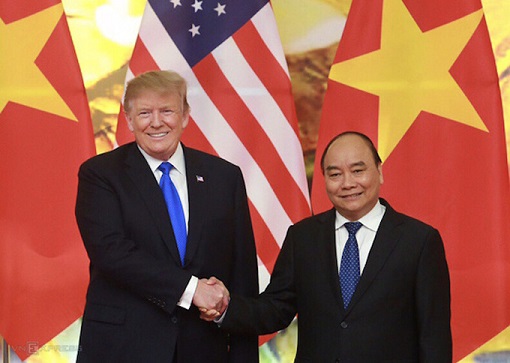
Other Articles That May Interest You …
- Despite Trade War And Anti-Chinese Rhetoric, China Wants President Trump To Get Reelected In 2020 – Here’s Why
- It’s Payback Time – China Trolls Trump To Stop “Hiding”, Mocks “Beautiful Sight” Of Looting & Burning In America
- Lawsuits For Trillions Of Dollars Against China Over Spread Of Coronavirus – Here’s Why It’s A Waste Of Time
- Forget Khat Jawi – Vietnam The Top Producer Of Programmers, Even Myanmar Has Started Computer Coding For Kids
- Obsolete Education System & Racial Politics – Reasons Malaysia Will Miss Major Spoils Of US-China Trade War
- PTPTN Student Loan Crisis – A Result Of Excessive Politicking, Racism Policies & Inferior Education System
- Only Extremist & Racist Would Feel Inferior And Lack Of Confidence Over UEC Recognition
- Bring Back DOS-Games Childhood Memory – Here’s How To Play For Free
- Flashback To 1994 – 15 Unforgettable Memories About Past Technology
- Errr … MSC What? Here’re 10 Vietnam Start-Ups With Over 1 Million Users

|
|
July 9th, 2020 by financetwitter
|


|

|

|

|

|

|




























They don’t have apartheid. They also have a firm grip on corruption — an essential aspect of capitalism and “democracy”. Perhaps that reduces theese aspects important to the pandemic: (a) invisible migrants including “religious” people (b) air pollution (c) medical prices.
The pandemic has exposed the foolishness of globalism. See this graphic for the countries most at risk due to dependence on foreign trade:
http://www.koreatimes.co.kr/www/news/biz/2010/09/123_73001.html
The cultural imperialists will be able to sell less of their culture-related products including entertainment, foods, education, junkets and other tourism.
Comparing every aspect of every topic to the shithole Empire is a waste of time.
Our local success against covid-19 partly reflects low testing. It may also relate to some undiscovered aspect of our food, climate, culture, etc.